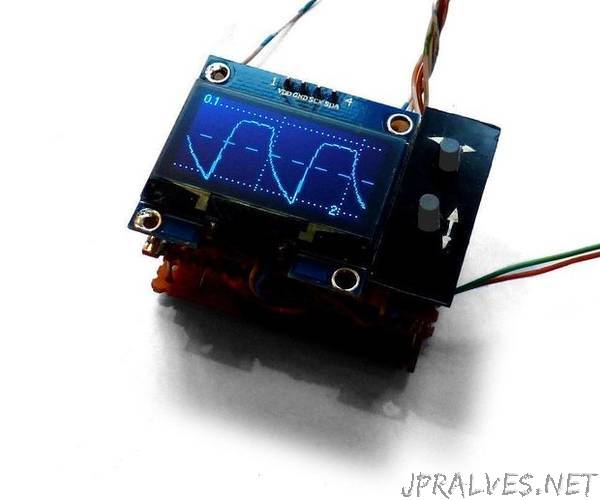
“Why would I want a tiny oscillscope? I’ve got a room full of electronic Stuff including four oscillscopes. But it’s a fuss using them. It would be nice to have something that fits in my pocket, that sits next to the circuit I’m working on and that’s as easy to use as a multimeter.
This oscilloscope costs the price of an Arduino Nano (£2 and a display (£3) plus a few pence for resistors, etc. It’s specification is:
max 1M samples/second, min 1000sps
8-bits per sample
DC 0-5V; AC +/- 550mV, AC +/- 117mV, AC +/- 25mV
USB “PC scope” or built-in display
could be battery-powered
optional logic display
optional frequency meter
optional voltmeter
Mostly what I want from an oscilloscope is to know: is the signal present? Roughly how big is it? And roughly what’s its frequency? It’s not often I really need all the bells and whistles of a proper bench oscilloscope.
How well does it work? At lower sample rates it’s quite reasonable. But at 1M samples/second it’s pretty poor. You can see that there’s a signal and see its frequency but the y-axis is quite crude. After all, it’s just an Arduino Nano so it “is like a dog’s walking on his hind legs. It is not done well; but you are surprised to find it done at all”.
A couple of years ago, I made a “development station” - a plastic box with a solderless-breadboard on the top and a USB-serial converter, PIC programmer, voltmeter and logic analyser inside. My “workbench” has shrunk from several square metres to 15cm square. It now also has its own oscilloscope. I’ll publish an Instructable for the “development station” real soon now.”
